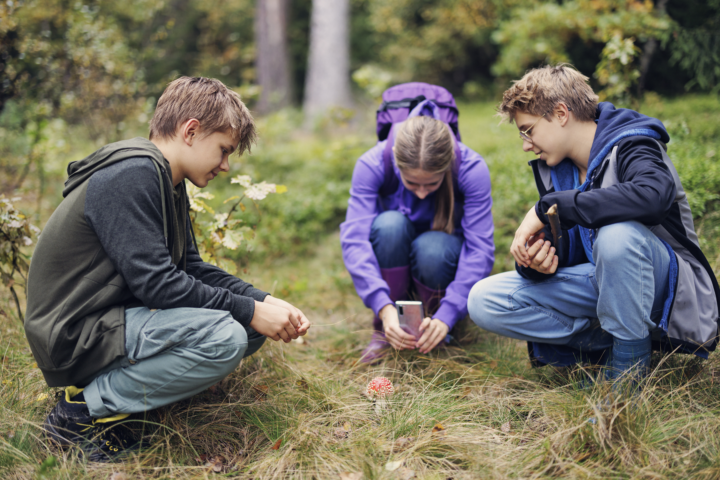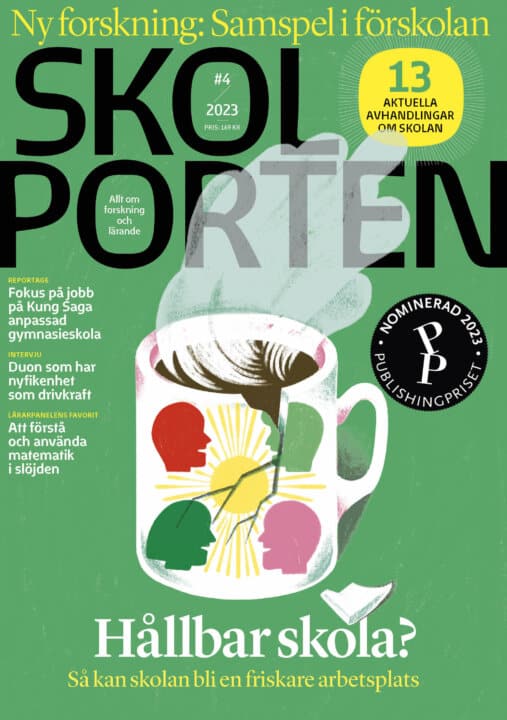Det sitter i väggarna. En studie av trä-och metallslöjdsalens materialitet, maskulinitet och förkroppsliganden
På vilket sätt lever gamla föreställningar om mansfostran kvar i trä- och metallslöjdsalen, och vilka erfarenheter görs när dagens elever möter denna miljö?
– Denna studie är därför ett viktigt bidrag i förståelsen av trä- och metallslöjdens lärmiljö, inte minst i en tid då både textilslöjd och trä- och metallslöjd ryms under en gemensam kursplan, och slöjdämnets åtskilda lärmiljöer diskuteras alltmer av slöjdlärare, säger Erik Sigurdsson, som forskat i ämnet.
Erik Sigurdson
Eva Skåreus, Per-Olof Erixon
Professor Mikael Alexandersson, Institutionen för pedagogik, kommunikation och lärande, Göteborgs universitet
Umeå universitet
2014-11-28
Det sitter i väggarna. En studie av trä-och metallslöjdsalens materialitet, maskulinitet och förkroppsliganden
Institutionen för estetiska ämnen
Abstract in English
This study focuses on the material aspects of the wood and metal workshop, which is one out of two learning settings in the Sloyd subject. Sloyd is a compulsory school subject in Sweden, which includes textile, wood and metal work. Historically, wood and metal Sloyd has been dominated by male pupils and teachers. The purpose of the thesis is to describe and analyse how the materialized masculinity of the wood and metal workshop is embodied by the pupils during class. The study concerns 41 observed lessons in three different workshops, during the period of 2011-2013. Six groups have been ob- served and the observations have been complemented with individual interviews, group interviews and one video recording. The study is conducted from a gender perspective, which considers sociomaterial structures to be a part of a gender structure. Following Raewyn Connell, Yvonne Hirdman and others, the gender structure of the sociomaterial wood and metal workshop is brought to light. But the main focus lies on the embodied phenomena of the sociomaterial structure. This is applied through a hermeneutical phenomenological methodology, where the main analytical tools have been ”the corporeal turn” as presented by Maxine Sheets-Johnstone, ”the lived body” as Merleau-Ponty describes it, and Young’s interpretation of”situatedness” in feminist phenomenology. As regards the results, an overarching structuralistic analysis of pupils’ expectancies and be- haviours in the setting, along with historical documents, show that the wood and metal workshop holds a strong material classification in school. It is geographically peripheral and resembles the workshops of the industry outside school, rather than classrooms inside school. The workshop also has a strong inner classification, where the metal room is classified as the most masculine place in the workshop, and the painting room and the workbench are classified as being weak in masculinity. Analysis shows that the materiality close to the skin (caps, dirt, protection gear and garments) is embodied both as an ex- pression or a visual sign for others, but also as a tactile immanence or non- visual objectification of the body. Analysis also shows that the materiality in contact with the hand of- ten has an elongated form. The common use of elongated objects (wagging, fencing, poking, crafting) in the Sloyd groups are described as a consequence of historical views on masculine movements and transcendence by the founders of male (wood and metal) Sloyd. Furthermore, the processing of the common three-dimensional materials are analysed as ”inside”, as a non-visual kinetic-kinaesthetic experience that lessens the visual objectification of the body. Beyond the reach of the hand, the three- dimensional, silent and personal artefacts render specific intersubjective situations. The space of the workshop is considered performative, using the silent and three-dimensional objects as proposals of intersubjective situations and tactile-kinaesthetic turn-takings. Conclusively, the results are discussed in relation to concepts of individuality and corporeal meaning in the workshop, the concrete rather than abstract masculinity, and in relation to the well-used concept of mediated experience in creative subjects such as Sloyd.
Relaterade länkar

Biologi
 Åk 7–Vux
Åk 7–Vux Hållbar utveckling i förskolan
 Fsk
Fsk 




